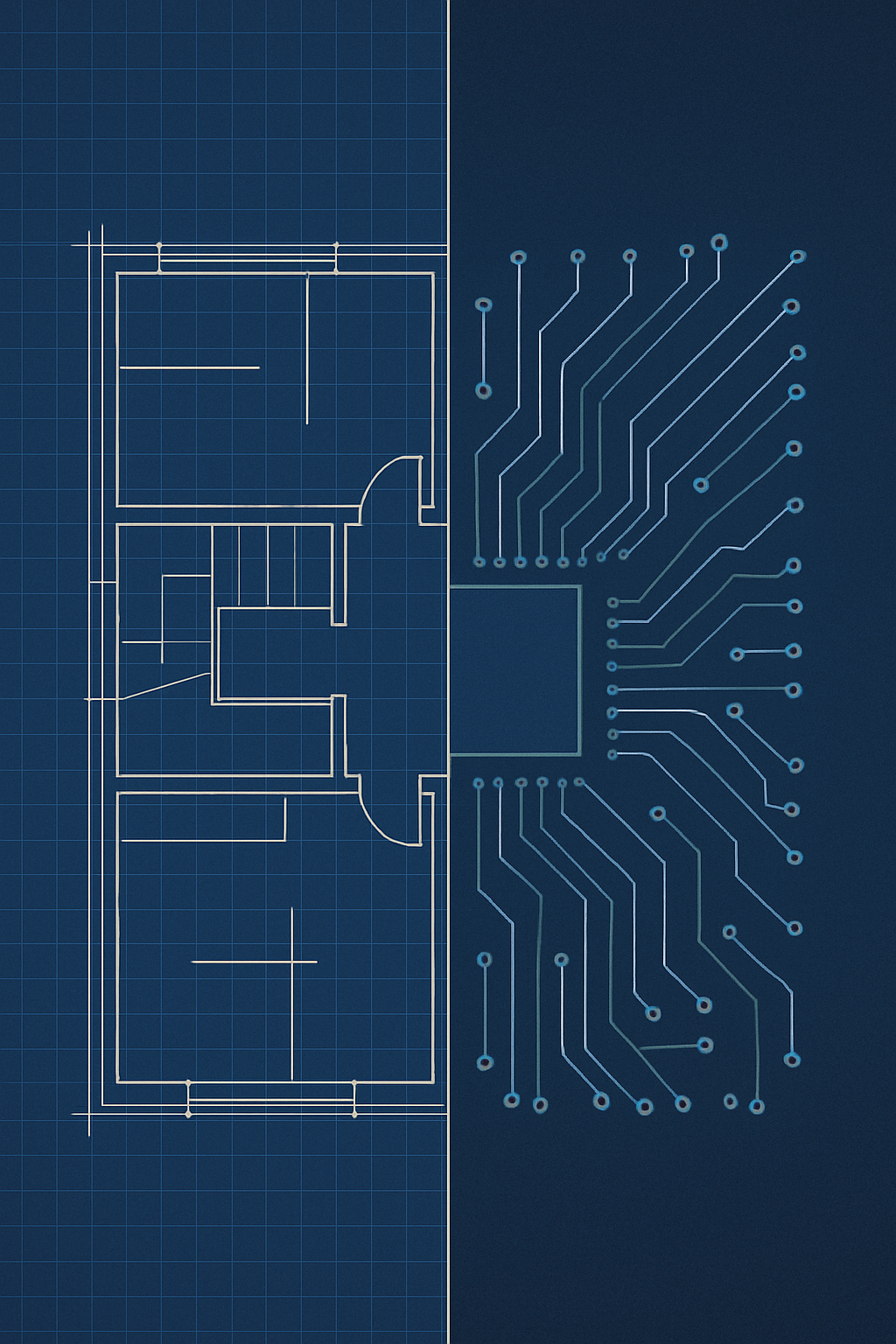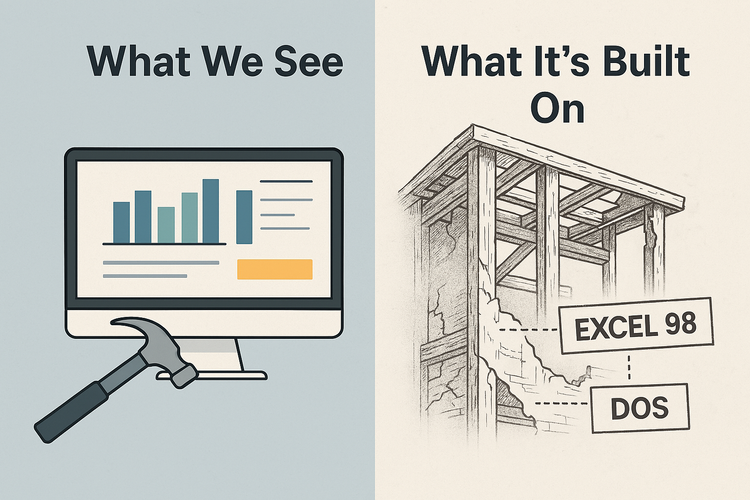Blueprints & Binary: Two Languages of Order

We often treat construction and computing as distant domains—one building the physical worlds , the other building worlds.
But step back far enough, and both reveal themselves as rituals of transformation.
Each is a language. Each begins with intention. Each seeks to impose meaningful order on chaos.
Construction, at its Core
Construction is the physical manifestation of intention.
It begins with vision, structured through drawings, governed by real-world constraints—materials, time, and codes—and executed in sequence by human roles and physical tools.
- Blueprints = Intention encoded
- Trades = Executors of logic
- Materials = Data shaped in physical space
- Schedule = Ordered instruction flow
- Inspection = Validation and error checking
It’s not just building—it’s compiling reality from concept to structure.
Computing, at its Core
Computing is the symbolic execution of logic.
It begins with architecture, shaped through syntax, governed by abstract rules—protocols, logic gates, and file systems—and executed by hardware and software in precisely ordered steps.
- System Architecture = Plan set
- Processor = Tradesperson executing the plan
- Memory = Material staging and access
- Code = Symbolic material
- Compiler = Superintendent translating design into action
- Debugger = Inspector searching for deviation
It’s not just automation—it’s structured thought brought to life.
The Shared Core
A sequence of intentional operations, executed by agents within a bounded structure, guided by plans, and validated against expected outcomes.
The Final Turn
In the end, whether we’re framing a wall or writing a function, we’re doing the same thing:
Turning vision into form through order, constraint, and collaboration.
Construction and computing are not rivals.
They are reflections—two dialects of the same universal act: creation with intent.



